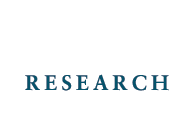| |
|
IMPROVING DESIGN THROUGH ORGANIZATION: CAPTURING THE RELATIONSHIP BETWEEN ORGANIZATION AND TASK
The design of a firm’s organization is perhaps one of its most important tools in the design and development of its products. Two organizations with comparable resources- human, computational, and other assets- may perform very differently as they structure and link their resources differently. Unfortunately, in a competitive, complex environment it is a non-obvious matter to design these relationships and flows. Organizations are inherently complex systems, and the ecologies of interdependencies that make up an organization often give rise to emergent nonlinear system behaviors. While this complicates the matter of modeling and designing organizations, these complex behaviors are essential to achieving the full potential of an organization. As individuals’ knowledge, decisions, and actions are combined in non-simple ways more complex system level properties are made possible… diversity of behavior rises with interdependence. This behavioral portfolio, the set of collective behaviors and actions an organization is capable of producing, is what we term the collective potential. For organizations in which the primary task is to resolve problems through the manipulation and synthesis of information, for example, the greater the collective potential the more complex the informational structures the organization can successfully synthesize.
Similarly, human cognition, simply stated, is essentially concerned with the ways an individual obtains, organizes, processes, stores, and uses information… the flow and structure of information. Marvin Minsky proposed that the mind is like a “society” with sets of interdependent “agents” or clusters of information that interact to produce thought [Minsky, 1986]. It is the pattern of interactions and relationships among these “agents” that produce complex thought patterns and problem solving capacity. Studies in cognitive problem solving have shown that the way in which a given problem is represented, what information is considered and how it is related and structured, has significant influence on its solvability. Problem difficulty and solvability, therefore, is not limited to an analysis of the problem alone, but the interplay between the problem and the solver’s representation of it.
In analogous patterns of combination, organizations are thought to display themselves distinct (emergent) cognitive properties not predicted on the aggregate of the participating individuals. Organizations can take action and form representations distinct from, and at times greater than, the sum of their parts. An organization’s collective representation, as in human cognition, should constitute an important factor in determining its ability to effectively solve a given problem. Understanding how the structure of an organization affects its problem representation, therefore, may significantly improve our understanding of how structure affects performance.
This research merges these two perspectives and is aimed at enhancing our understanding of the interplay between an organization’s design and the characteristics of the problem contextualizing its work. In particular, how the correlation between the structure of knowledge characteristic of an organization’s design and the structure of relationships characteristic of a problem space influence both performance and the collective representation. We believe that these studies have the potential to impact both the way human teams are organized and introduce new methodological approaches for computational synthesis.
Primary Researcher: JESSE OLSON
|
|

